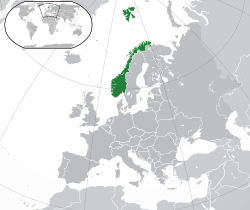Top Qs
Timeline
Chat
Perspective
Convoy QP 13
From Wikipedia, the free encyclopedia
Remove ads
Convoy QP 13 was an Arctic convoy of the PQ/QP series which ran during the Second World War. It was the thirteenth of the numbered series of convoys of merchant ships westbound from the Arctic ports of Arkhangelsk and Murmansk to the United Kingdom, Iceland, and North America.
Remove ads
Ships
Summarize
Perspective
Convoy QP 13 consisted of 35 merchant ships, most of which had arrived with Convoy PQ 16. The convoy commodore was Capt. N. H. Gale Royal Navy Reserve (RNR) in Empire Selwyn. Most of the ships were returning empty after delivering war material to the Soviet Union, but some Soviet ships carried cargoes of export timber. Convoy QP 13 was escorted by five destroyers, Achates, Garland, Inglefield, Intrepid and Volunteer; two Anti submarine warfare (ASW) minesweepers, Hussar and Niger and four corvettes Honeysuckle, Hyderabad, Roselys and Starwort. The close escort was supplemented by the anti-aircraft ship Alynbank and the trawlers HMT Lady Madeleine and St Elstan.[1]
The convoy sailed simultaneously with eastbound convoy PQ 17 for both convoys to benefit from the heavy covering force of the British aircraft carrier HMS Victorious, the battleship HMS Duke of York, the cruisers HMS Cumberland and Nigeria and the destroyers HMS Ashanti, Douglas, Faulknor, Marne, Martin, Onslaught and Onslow with the American battleship USS Washington and destroyers USS Mayrant and Rhind. The covering force was commanded by Admiral John Tovey aboard the flagship Duke of York.[1]
Remove ads
Voyage
Summarize
Perspective

Intrepid was one of five destroyers escorting Convoy QP 13
Convoy QP 13 left Arkhangelsk on 26 June 1942 reinforced by a local escort of the Soviet destroyers Gremyashchiy, Grozny and Kuibyshev with the British destroyer HMS Tartar and the Halcyon-class minesweepers HMS Bramble, Hazard, Leda and Seagull. The local escort was replaced on 29 June by an anti-aircraft escort of Hunt class destroyers HMS Blankney, Middleton and Wheatland.[1] On 30 June German air reconnaissance found Convoy QP 13 180 mi (290 km) north of North Cape, Norway. U-88 was shadowing the convoy by 2 July but Admiral Nordmeer, Hubert Schmundt, ordered German forces to ignore the empty westbound ships and focus on the loaded ships of eastbound Convoy PQ 17. The Hunt-class destroyers detached on 4 July when Convoy QP 13 was out of range of German bombers.[1]
Convoy QP 13 encountered fog on 5 July 1942. In poor visibility, Niger mistook an iceberg for Iceland’s North Western Cape and six merchant ships followed her into the Northern Barrage minefield, SN72, laid one month earlier at the entrance to the Denmark Strait.[2] All seven ships detonated naval mines and there were only eight survivors of the 127 men aboard Niger; of the freighters, only Exterminator could be salvaged. No crewmen were lost from Exterminator, Hybert and Rodina but one crewman died abandoning Hefron, five men drowned when John Randolph broke in two and Massmar sank with 17 merchant seamen, 5 Naval Armed Guards and the 26 survivors she was carrying from the sinking of Alamar in Convoy PQ 16.[3] The surviving ships destined for Reykjavík were escorted into port on 7 July by St Elstan and Lady Madeleine.[2]
Remove ads
Allied order of battle
Convoyed ships
Eastern local escort
Ocean escort
Remove ads
Notes
- Convoys had a standard formation of short columns, number 1 to port in the direction of travel. Each position in the column was numbered; 11 was the first ship in column 1 and 12 was the next ship in the column; 21 was the first ship in column 2.[4]
Footnotes
References
Further reading
Wikiwand - on
Seamless Wikipedia browsing. On steroids.
Remove ads

